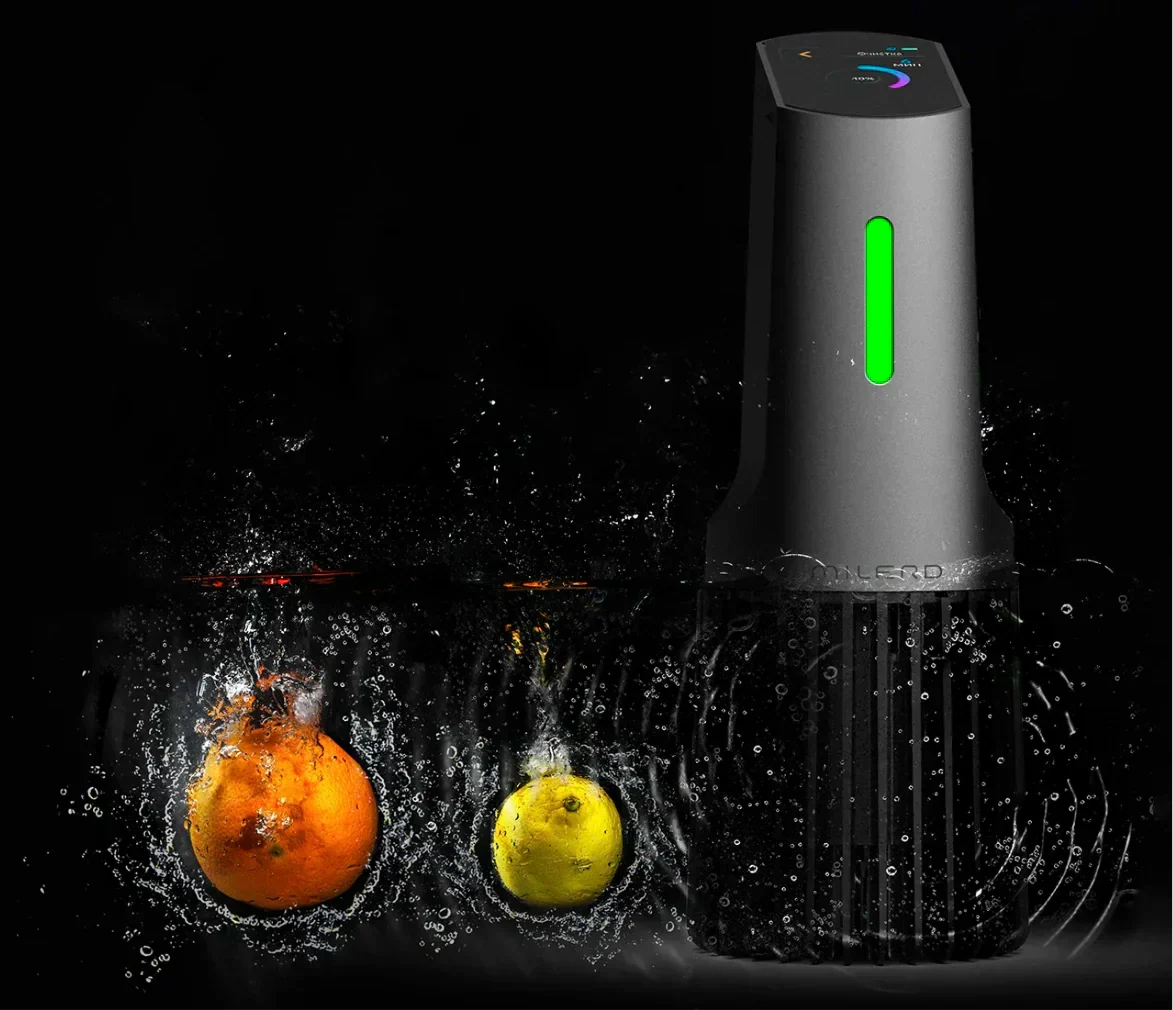Do laptops give off radiation? Yes, laptops emit electromagnetic radiation, including radiofrequency and low-frequency electromagnetic fields. But does laptop give off radiation harmful? This article explores the types of radiation laptops emit, their potential health impacts, and practical safety guidelines.
Key Takeaways
-
Laptops emit non-ionizing electromagnetic radiation, including low-frequency EMFs and high-frequency radio waves, which are generally considered safe for human use.
-
Using laptops on the lap can raise scrotal temperatures, potentially affecting male reproductive health by decreasing sperm quality and motility.
-
Implementing safe usage practices, such as maintaining distance from the laptop and using external peripherals, can minimize exposure to electromagnetic radiation and its associated risks.
Understanding Electromagnetic Radiation from Laptops

Electromagnetic radiation consists of energy waves that travel through space, generated by both natural and human-made sources. Laptops, like many consumer electronics, emit these energy waves, which include both low-frequency electromagnetic fields and high-frequency radiofrequency radiation within the electromagnetic spectrum. These emissions need to be understood to gauge their potential health effects.
Laptop radiation encompasses various types of electromagnetic waves emitted by the device. These include radio waves, infrared radiation, and even visible light. Each type of radiation varies in properties and potential health impacts. Understanding the types of radiation and their sources within the laptop is essential.
Types of Radiation Emitted by Laptops
Laptops generate both low-frequency electromagnetic fields (EMFs) and high-frequency radiofrequency radiation during their operation. The electric and magnetic fields produced by laptops are generally considered safe for human use, as they are classified as non-ionizing radiation. This means they do not have enough energy to remove tightly bound electrons from atoms, which is the mechanism that can cause cellular damage and increase cancer risk. Additionally, laptops can contribute to low energy exposure in the environment.
Research indicates that the levels of radiation emitted by laptops are too low to pose significant health risks and may not cause harm. This includes the radioactive radiofrequency radiation from Wi-Fi and Bluetooth, which, although higher in frequency, still falls within the non-ionizing category. Therefore, laptops are generally safe regarding cancer risk.
However, identifying the sources of radiation within the device is key.
Sources of Laptop Radiation
The main sources of radiation in laptops include components like the processor, display, and wireless communication devices such as Wi-Fi cards and Bluetooth modules. These components are responsible for emitting various types of radiation, including radiofrequency and infrared radiation. The integrated circuits within laptops also contribute significantly to these emissions.
For instance, the Wi-Fi card in your laptop transmits and receives data wirelessly, emitting radiofrequency radiation in the process. Similarly, the processor and other integrated circuits generate electromagnetic fields during their operation in computers. Knowing these sources allows for better exposure mitigation and safer usage practices.
Health Implications of Laptop Radiation

Laptops emit wireless electromagnetic microwave radiation similar to that of cell phones. However, it’s important to note that laptops emit non-ionizing radiation, which is generally considered safe and does not lead to reproductive issues. The low-frequency and low-intensity nature of this radiation means it is not harmful to humans.
From a long-term perspective, the levels of radiation emitted by laptops are considered safe. However, specific concerns arise when we consider the potential impact on male reproductive health and general health. Being aware of these implications is necessary for making informed laptop usage decisions.
Impact on Male Reproductive Health
Studies have shown that using laptops on the lap can lead to an increase in scrotal temperature. This rise in temperature is significant enough to affect sperm quality, as research has demonstrated that elevated scrotal temperatures can lead to lower sperm counts and motility. The potential implications of these findings are concerning for men’s reproductive health, highlighting a risk factor that can be mitigated through lifestyle changes.
Prolonged laptop use on the lap raises scrotal temperature, potentially linking to male infertility. This highlights the need for safer practices, like using a lap desk or placing the laptop on a stable surface to avoid excessive heating.
Effects on Sperm DNA Fragmentation
Radiation emitted from devices like laptops, specifically Wi-Fi radiation, is a concern for male reproductive health. Studies suggest that exposure to Wi-Fi radiation may lead to decreased sperm motility and increased sperm DNA fragmentation. These findings highlight the need for awareness about the potential impact of laptop usage on male fertility outcomes.
The primary sources of radio-frequency emission in laptops are the integrated circuits and Wi-Fi card. This knowledge aids in taking preventive measures to reduce exposure and protect reproductive health.
General Health Concerns
Using laptops for long hours can lead to physical discomfort, including musculoskeletal problems due to poor ergonomics. Poor posture from extended laptop use can contribute to issues such as back problems and eye strain. Prolonged exposure to laptop screens is also associated with an increased risk of digital eye strain.
Research also indicates that Wi-Fi radiation from laptops may negatively impact sperm motility and increase DNA fragmentation, which may cause worry. This underscores the importance of ergonomic practices and awareness of potential long-term radiation exposure risks.
Safety Guidelines for Using Laptops

Implementing safe usage practices helps minimize exposure to electromagnetic fields emitted from laptops. Positioning the laptop on a desk instead of your lap can significantly lower exposure to electromagnetic fields (EMFs). Using a laptop on a hard surface instead of directly on your lap reduces exposure to heat and radiation.
Maintaining at least 20 centimeters of distance between the laptop and the user can significantly reduce radiation exposure. These simple steps can make a significant difference in reducing potential health risks from laptop use.
Safe Usage Practices
To minimize exposure to electromagnetic radiation from a laptop computer or computer:
-
Keep a safe distance from the laptop.
-
Position the laptop on a stable desk rather than on your lap to reduce direct exposure.
-
Utilize an external keyboard and mouse to allow the laptop to be placed further away from the body.
Additionally, using a lap desk can help increase the distance between the laptop and the user’s body, further reducing potential exposure. These practices are simple yet effective ways to ensure safer laptop use.
Reducing Exposure to EMF Radiation
Disabling Wi-Fi and Bluetooth devices when they are not needed can help eliminate unnecessary sources of radiation. By turning off Wi-Fi and Bluetooth, users can significantly reduce their exposure to electromagnetic fields emitted by laptops.
Cutting down EMF radiation exposure from laptops is essential to mitigate long-term health risks. Wireless features such as Wi-Fi and Bluetooth contribute significantly to the electromagnetic radiation emitted by laptops. These simple actions contribute to safer laptop use with reduced EMF radiation exposure.
Introduction to Milerd HiRange

The Milerd HiRange is a portable EMF detector designed to help users monitor electromagnetic field (EMF) exposure from various electronic devices, including laptops. This device allows for easy monitoring of both low and high-frequency electromagnetic fields, enabling users to track radiation exposure effectively.
The Milerd HiRange is designed to measure electromagnetic fields in both home and professional settings, providing insights into environmental radiation levels. This device helps users make informed decisions about environmental radiation exposure and take necessary precautions to minimize health risks.
Measurement Capabilities
The Milerd HiRange is designed to measure electromagnetic fields accurately across a wide frequency range, from 1 MHz to 8 GHz. This broad range ensures it captures signals from modern technologies, including 5G networks.
The Milerd HiRange’s advanced measurement capabilities detect both low-frequency fields from household appliances and high-frequency fields from wireless systems. This makes it suitable for various applications, providing comprehensive insights into EMF exposure.
How to Use Milerd HiRange to Monitor Laptop Radiation

The Milerd HiRange is a compact and intelligent EMF detector designed for both professional and home use, helping users monitor electromagnetic radiation levels. Using this device allows users to gain insights into their environments and helps avoid long-term exposure to harmful radiation.
Following the step-by-step instructions in the manual ensures proper placement for accurate readings. This section will provide an overview of the setup and usage process to help you get started.
Setting Up the Device
To set up the Milerd HiRange:
-
Ensure the device is fully charged.
-
Follow the instructions to calibrate it properly before taking measurements.
-
Familiarize yourself with its intuitive interface for easy navigation.
Select the appropriate measurement mode based on the type of radiation being monitored, ensuring accurate readings. Proper setup is crucial for obtaining reliable data and making informed decisions about your EMF exposure.
Interpreting Readings
The readings from the Milerd HiRange can be interpreted by comparing the displayed values against safe exposure guidelines established by health authorities. Interpreting these readings accurately helps users avoid unsafe radiation levels while using their laptops.
Accurate interpretation is vital for safe laptop usage. By comparing the readings to established safety guidelines, users can determine if the radiation levels are within safe limits.
Long-Term Monitoring
The Accumulated Dose feature of the Milerd HiRange tracks daily radiation exposure over a 30-day period, assisting users in managing their long-term exposure to electromagnetic fields. This feature allows users to monitor their radiation levels continuously, providing insights into their daily exposure and helping them make informed decisions about their health and safety.
Utilizing the Accumulated Dose feature enables users to keep track of their electromagnetic exposure over a month, fostering better management of long-term health risks. Understanding cumulative exposure allows users to take proactive steps to reduce EMF exposure and protect their health.
Summary
In summary, laptops emit various types of electromagnetic radiation, primarily low-frequency EMFs and high-frequency radiofrequency radiation. While these emissions are generally considered safe, prolonged exposure can have specific health implications, particularly concerning male reproductive health and general well-being. By understanding the sources and types of radiation emitted by laptops, users can adopt safer usage practices and reduce their exposure to EMF radiation.

The Milerd HiRange is a valuable tool for monitoring and managing EMF exposure, offering comprehensive measurement capabilities and user-friendly data representations. By utilizing this device, users can make informed decisions about their radiation exposure and take proactive steps to minimize health risks. Remember, awareness and precaution are key to ensuring safe and effective laptop use.



Laat een reactie achter
Deze site wordt beschermd door hCaptcha en het privacybeleid en de servicevoorwaarden van hCaptcha zijn van toepassing.